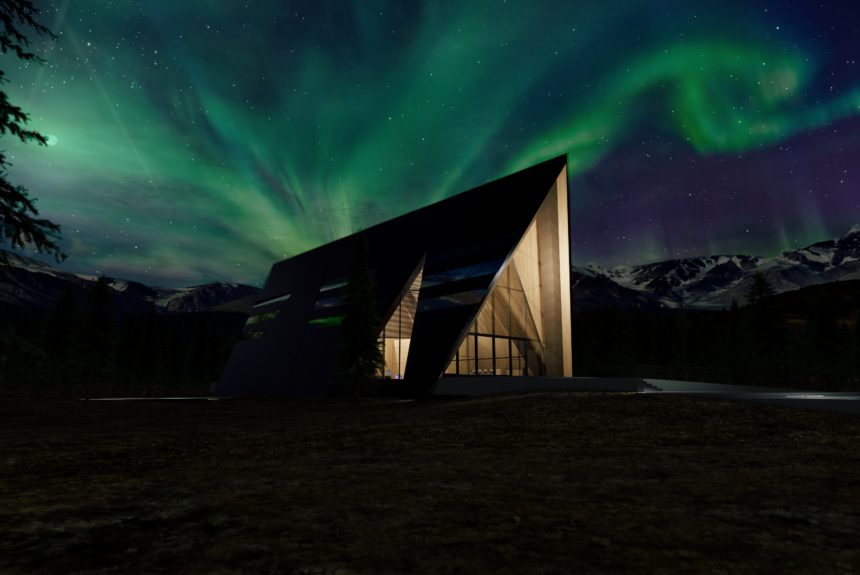With new state regulations adopted this summer, Alaska is clearing the path for reliable and affordable energy solutions. Soon, nuclear microreactors could bring cheap, clean energy to rural areas year-round.
Households in Alaska’s rural communities rely on wood, heating oil, natural gas, propane, and coal to keep their houses warm in subarctic temperatures. Heating oil averaged $5.03 per gallon in the winter of 2022, with some communities seeing prices up to $12 per gallon. That’s a problem when 79% of households rely on diesel fuel to heat their homes and energy costs comprise more than a quarter of household income.
>>>READ: What Will 2023 Look Like for Small Nuclear Power?
Now imagine if Alaskan communities had access to cheap, reliable, and emissions-free energy. No more planes and barges racing against time to deliver enough heating oil before the winter. Nuclear energy can make Alaska’s small communities resilient to supply-chain disruptions, reduce the price of energy, and drive economic opportunity. Making it easier for nuclear microreactors to thrive in rural Alaska is a no-brainer.
A full-blown nuclear power plant wouldn’t be feasible for many of these communities — about 80% of Alaska’s communities have a population of less than 1,500 people — but they could support microreactors. Microreactors can generate no more than 50 megawatts of energy, while conventional reactors generate 1,000 megawatts or more. Even a single megawatt can power 1,000 households — so even the smallest microreactors could bring energy to countless Alaskan communities.
Microreactors are also more versatile and reliable than conventional heating methods. They are small enough to transport by truck, plane, or railcar, and, since they’re factory-fabricated, can be constructed in months or even weeks. Microreactors are also independent of existing power grids, so they can respond quickly to provide power in natural disasters or support military bases cut off from power.
Nuclear is also one of the safest power sources available. Despite disasters like Fukushima–which led to zero radiation-related deaths–and Chernobyl looming large in the public imagination, these events are exceedingly rare and unlikely to occur in the U.S. under the current regulatory structure. Accidents and air pollution cause only 0.03 deaths per unit of nuclear electricity production, while oil causes 18.43 deaths and coal causes 24.62 deaths per unit of electricity production.
This July, Alaska adopted regulations to localize decisions about microreactor siting. Previously, the state legislature had to designate land for the microreactor, and the local municipal government had to approve the permit. Under the new regulations, only local governments approve the permit, except in the case of areas that are “unorganized” and have no municipal government — in those instances, the legislature must approve permits.
Even with these new regulations in place, many elements of new reactor creation are out of state hands and subject to the Nuclear Regulatory Commission, which controls all aspects of civilian nuclear safety and enforces a lengthy permitting and licensing process. The state’s authority extends only to siting, which it has localized as much as it reasonably can.
>>>READ: Senator Shelley Moore Capito Leads to ADVANCE Nuclear Energy
In the interest of public safety, the new regulations have some common-sense restrictions. The Alaska Beacon reports that a microreactor cannot be built within 2,700 feet of a residence, 300 feet of a national park or game reserve, or within 100 feet of a public road or trail. These requirements will ensure that new reactors will be both safe and unobtrusive.
Some projects are already taking advantage of the new legislation. Alaska’s first nuclear microreactor is likely to come online at Eielson Airforce Base by the end of 2027 while the Copper River Electric Association has begun a feasibility study for a commercial microreactor in Valdez, Alaska. These could be the first of many that would benefit Alaskans with cheap and reliable energy.
Nuclear provides almost half of all carbon-free energy in the U.S. and 19% of total power. Alaska is about to increase these numbers, demonstrating to the rest of the U.S. that microreactors can provide safe, cheap, and reliable energy in rural areas. It has paved the way with new regulations that put the decision back in the hands of local governments.
Sarah Montalbano is the Policy Manager at Alaska Policy Forum and Northwest Regional Leader with Young Voices. Ms. Montalbano is also a visiting fellow at the Independent Women’s Forum. Follow her on Twitter: @SarahMontalban0
The views and opinions expressed are those of the author’s and do not necessarily reflect the official policy or position of C3.
